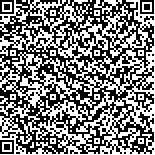下载中心
优秀审稿专家
优秀论文
相关链接
首页 > , Vol. , Issue () : -
摘要

波段选择是高光谱遥感图像降维的一项重要任务,其目标是选择包含较少冗余信息、较大信息量和具有类别可分性的波段子集。为解决基于近邻子空间划分的波段选择方法没有考虑地物空间分布和计算聚类中心时忽略噪声波段影响的问题,本文提出了一种结合空谱结构与改进局部密度的高光谱图像波段选择方法。该方法首先对高光谱图像进行基于熵率的图像分割获得高光谱图像同质区域,综合同质区域相关系数矩阵获得图像区域级近邻波段相关系数向量;其次,用高斯核平滑全局近邻波段相关系数向量以降低噪声波段的影响,并根据极值点进行波段分组;然后,最大化改进局部密度和波段信息熵的乘积作为选取代表性波段的标准;最后,在Indian Pines、Botswana 和Salinas高光谱图像数据集上,通过SVM、KNN和LDA分类器上进行分类实验。结果表明:①对比像素级相关系数划分方法,利用区域级相关系数使得近邻波段分组更为合理,降低波段冗余性,同时还保留了部分潜在特征波段,在3个数据集上的分类性能分别提高了2.63%,0.68%,0.16%;②对比仅使用信息熵的波段衡量方法,本文提出的最大化改进的局部密度和信息熵乘积的方法是有效的,在3个数据集上OA分别提高了4.13%、0.5%和0.21%;③对比其他6种先进波段选择方法,本文方法在3个数据集上的OA分别从62.34%提高到75.03%、86.74%提高到88.28%和86.04%提高到92.36%。此外,所选择的波段子集在分布上较为分散,主要集中在信息熵较高的区域,同时避免了选择噪声波段。综上,本文提出的波段选择方法所得波段子集具有较低的冗余性、丰富的信息量、强的类别可分性,并且对噪声具有较强的鲁棒性,能够有效地解决高光谱图像波段选择的问题。
Band selection is a crucial task in the dimensionality reduction of hyperspectral remote sensing imagery. Its objective is to choose a subset of bands that contain less redundant information, higher information content, and exhibit class discriminability. To address the issues of existing band selection methods based on nearest neighbor subspace partitioning, which do not consider the spatial distribution of objects and neglect the impact of noisy bands when computing cluster centers, this paper proposes a hyperspectral image band selection method that integrates spatial spectral structure with improved local density, referred to as ISSS-ELD. This method first performs image segmentation on the hyperspectral image using entropy-based approach to acquire homogeneous regions. The composite region-level neighboring band correlation coefficient vector is obtained by integrating the correlation coefficient matrix of these homogeneous regions. Subsequently, a Gaussian kernel is applied to globally smooth the neighboring band correlation coefficient vector, reducing the influence of noisy bands. Bands are grouped based on extremum points in the smoothed vector. Finally, the product of the maximized improved local density and band information entropy serves as the criterion for selecting representative bands. This paper conducted experiments on hyperspectral image datasets including Indian Pines, Botswana, and Salinas. Different band selection methods were evaluated by calculating metrics such as classification accuracy, average correlation coefficient, and noise robustness of the selected bands. The results indicate that: (1) Compared to pixel-level correlation-based partitioning methods, the utilization of region-level correlation coefficients results in more reasonable grouping of neighboring bands, reducing band redundancy while retaining some potential characteristic bands. The classification performance on the three datasets improved by 2.63%, 0.68%, and 0.16% respectively. (2) In contrast to methods solely using information entropy for band assessment, the proposed approach of maximizing the product of improved local density and information entropy proves effective. On the three datasets, Overall Accuracy (OA) increased by 4.13%, 0.5%, and 0.21% respectively. (3) Compared to six other advanced band selection methods, the proposed method achieved significant performance improvements: OA increased from 62.34% to 75.03%, from 86.74% to 88.28%, and from 86.04% to 92.36% on the three datasets. Furthermore, the selected subset of bands by our method is dispersed, concentrating in regions with higher information entropy, and effectively avoiding the inclusion of noisy bands. In summary, the band subset selected by the proposed band selection method exhibits low redundancy, high information content, strong class separability, and robustness against noise, effectively addressing the challenges in hyperspectral image band selection.

